🔭🌌☄️🪐
🔭🌌☄️🪐

The Running Chicken Nebula comprises several clouds, all of which we can see in this vast image from the VLT Survey Telescope (VST), hosted at ESO’s Paranal site. This 1.5-billion pixel image spans an area in the sky of about 25 full Moons. The clouds shown in wispy pink plumes are full of gas and dust, illuminated by the young and hot stars within them.
Credit: ESO
More Posts from Monstrous-mind and Others
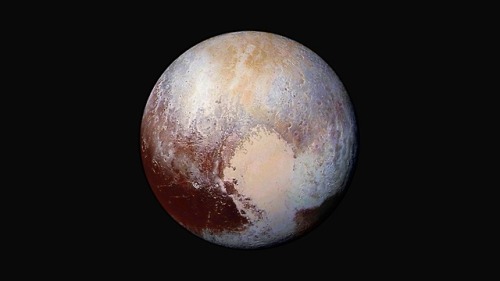

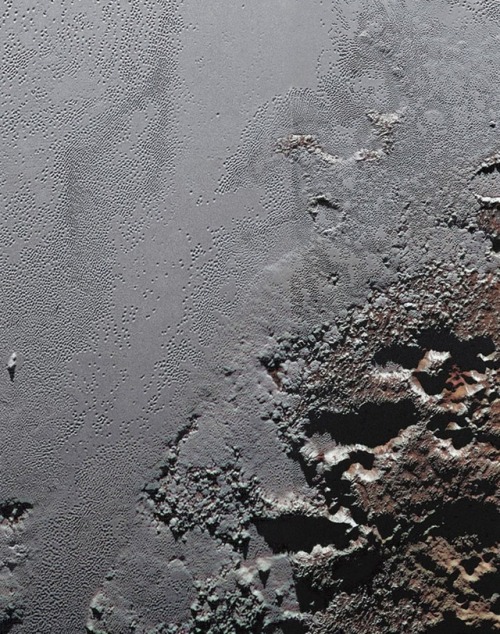
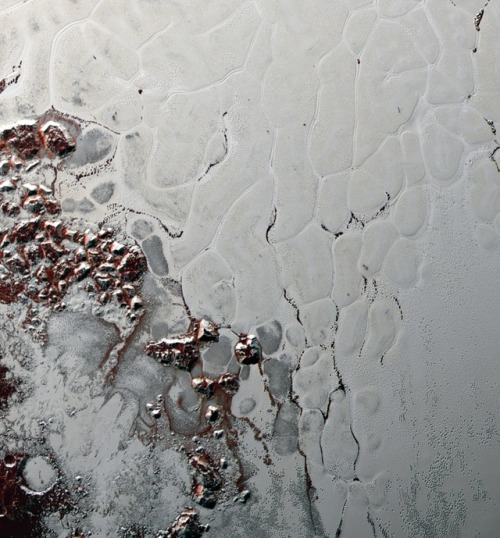
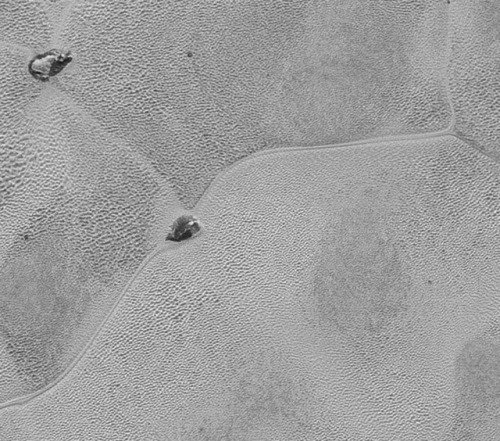
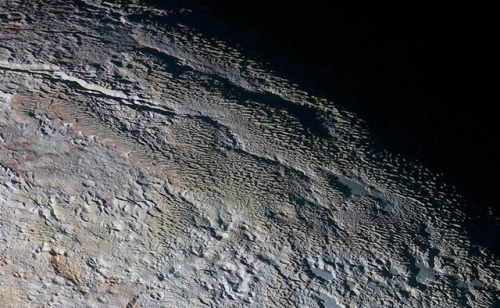
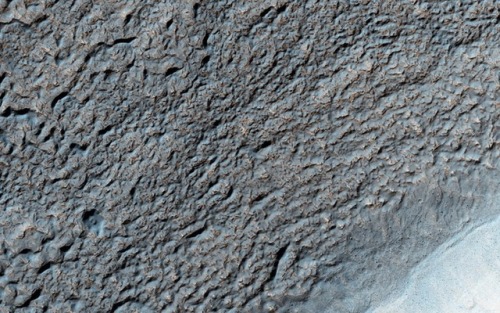
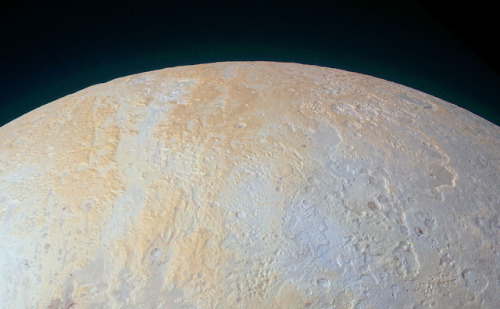
High-resolution images of Pluto taken by NASA’s New Horizons spacecraft.
The plains on Pluto’s surface are composed of more than 98 percent nitrogen ice, with traces of methane and carbon monoxide. Nitrogen and carbon monoxide are most abundant on the anti-Charon face of Pluto (around 180° longitude, where Tombaugh Regio’s western lobe, Sputnik Planitia, is located), whereas methane is most abundant near 300° east. The mountains are made of water ice. Pluto’s surface is quite varied, with large differences in both brightness and color. Pluto is one of the most contrastive bodies in the Solar System, with as much contrast as Saturn’s moon Iapetus. The color varies from charcoal black, to dark orange and white. Pluto’s color is more similar to that of Io with slightly more orange and significantly less red than Mars. Notable geographical features include Tombaugh Regio, or the “Heart” (a large bright area on the side opposite Charon), Cthulhu Macula, or the “Whale” (a large dark area on the trailing hemisphere), and the “Brass Knuckles” (a series of equatorial dark areas on the leading hemisphere). Sputnik Planitia, the western lobe of the “Heart”, is a 1,000 km-wide basin of frozen nitrogen and carbon monoxide ices, divided into polygonal cells, which are interpreted as convection cells that carry floating blocks of water ice crust and sublimation pits towards their margins; there are obvious signs of glacial flows both into and out of the basin. It has no craters that were visible to New Horizons, indicating that its surface is less than 10 million years old.
source | images: NASA/JPL
🍁🍂🎃🍂🍁🍃🌬🌄🐈

Why Won’t Our Parker Solar Probe Melt?
This summer, our Parker Solar Probe will launch to travel closer to the Sun than any mission before it, right into the Sun’s outer atmosphere, the corona.

The environment in the corona is unimaginably hot: The spacecraft will travel through material with temperatures greater than 3 million degrees Fahrenheit.
So…why won’t it melt?
The Difference Between Heat and Temperature
Parker Solar Probe was designed from the ground up to keep its instruments safe and cool, but the nature of the corona itself also helps. The key lies in the difference between heat and temperature.
Temperature measures how fast particles are moving, while heat is the total amount of energy that they transfer. The corona is an incredibly thin and tenuous part of the Sun, and there are very few particles there to transfer energy – so while the particles are moving fast (high temperature), they don’t actually transfer much energy to the spacecraft (low heat).

It’s like the difference between putting your hand in a hot oven versus putting it in a pot of boiling water (don’t try this at home!). In the air of the oven, your hand doesn’t get nearly as hot as it would in the much denser water of the boiling pot.
So even though Parker Solar Probe travels through a region with temperatures of several million degrees, the surface of its heat shield will reach only about 2,500 F.

The Heat Shield
Of course, thousands of degrees Fahrenheit is still way too hot for scientific instruments. (For comparison, lava from volcano eruptions can be anywhere between 1,300 to 2,200 F.)
To withstand that heat, Parker Solar Probe is outfitted with a cutting-edge heat shield, called the Thermal Protection System. This heat shield is made of a carbon composite foam sandwiched between two carbon plates. The Sun-facing side is covered with a specially-developed white ceramic coating, applied as a plasma spray, to reflect as much heat as possible.

The heat shield is so good at its job that even though the Sun-facing side of the shield will be at 2,500 F, the instruments in its shadow will remain at a balmy 85 F.
Parker Solar Probe Keeps its Cool
Several other designs on the spacecraft help Parker Solar Probe beat the heat.
Parker Solar Probe is not only studying the Sun – it’s also powered by it. But even though most of the surface area of its solar arrays can be retracted behind the heat shield, even that small exposed segment would quickly make them overheat while at the Sun.

To keep things cool, Parker Solar Probe circulates a single gallon of water through its solar arrays. The water absorbs heat as it passes behind the arrays, then radiates that heat out into space as it flows into the spacecraft’s radiator.
It’s also important for Parker Solar Probe to be able to think on its feet, since it takes about eight minutes for information to travel between Earth and the Sun. If we had to control the spacecraft from Earth, by the time we knew something went wrong, it would be too late to fix it.
So Parker Solar Probe is smart: Along the edges of the heat shield’s shadow are seven sensors. If any of these sensors detect sunlight, they alert the central computer and the spacecraft can correct its position to keep the sensors – and the rest of the instruments – safely protected behind the heat shield.

Over the course of its seven-year mission, Parker Solar Probe will make 24 orbits of our star. On each close approach to the Sun, it will sample the solar wind, study the Sun’s corona, and provide unprecedentedly close up observations from around our star – and armed with its slew of innovative technologies, we know it will keep its cool the whole time.
Parker Solar Probe launches summer 2018 on its mission to study the Sun. Keep up with the latest on the mission at nasa.gov/solarprobe or follow us on Twitter and Facebook.
Make sure to follow us on Tumblr for your regular dose of space: http://nasa.tumblr.com


Saturn - False Color - 2004 and 2014
Credit: NASA/JPL-Caltech/SSI/CICLOPS/Kevin M. Gill

The Instrument Deployment Camera (IDC), located on the robotic arm of NASA’s InSight lander, took this picture of the Martian surface on Nov. 26, 2018, the same day the spacecraft touched down on the Red Planet. The camera’s transparent dust cover is still on in this image, to prevent particulates kicked up during landing from settling on the camera’s lens. This image was relayed from InSight to Earth via NASA’s Odyssey spacecraft, currently orbiting Mars.
Credits: NASA/JPL-Caltech
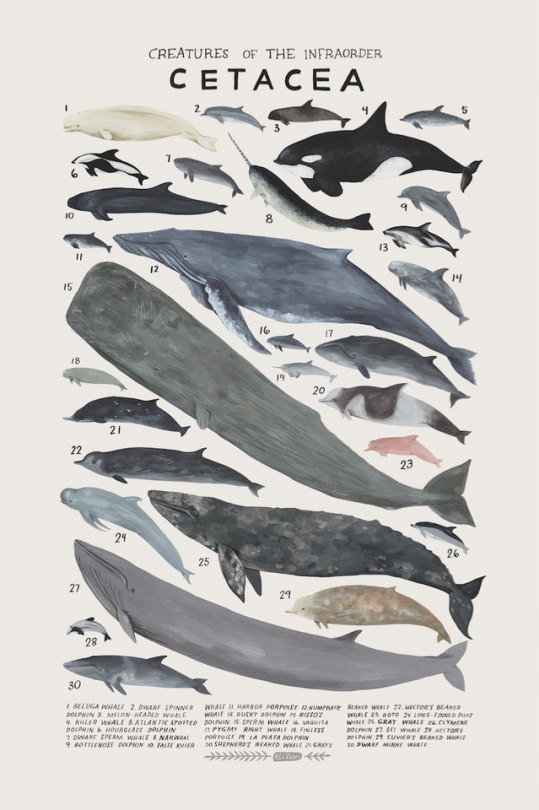

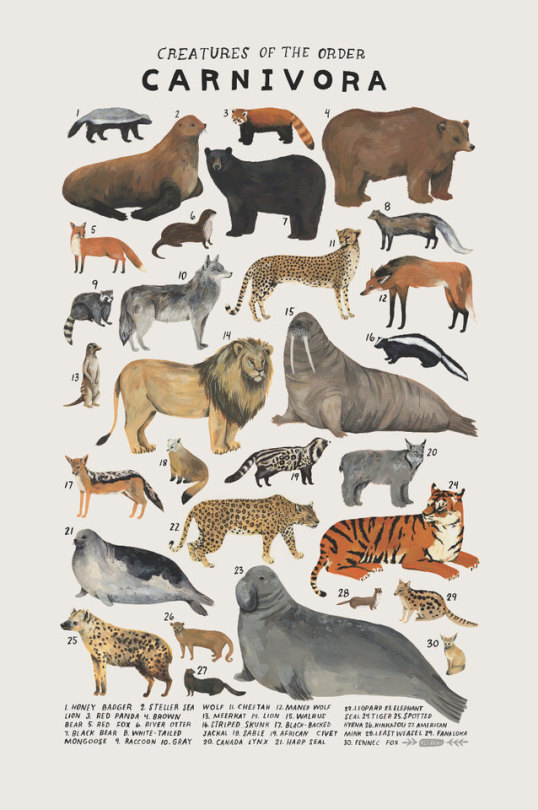

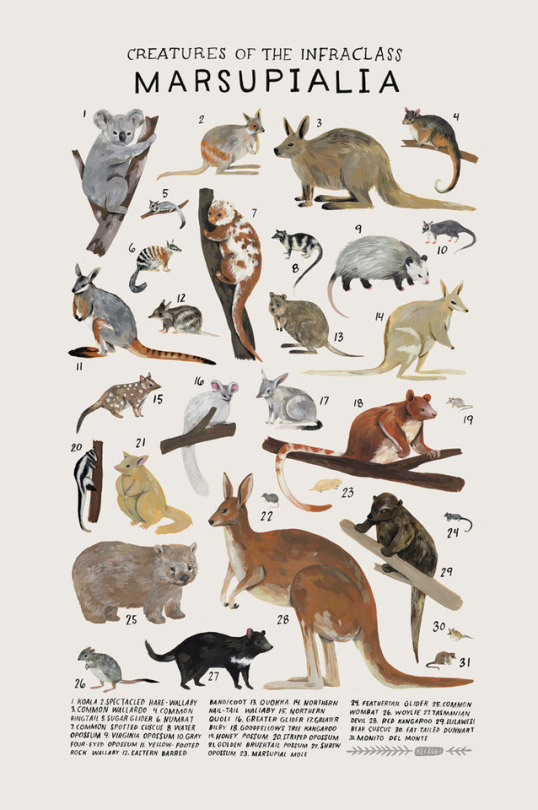





Science Posters by Kelsey Oseid on Etsy
What’s Up For September 2018?
Outstanding views Venus, Jupiter, Saturn and Mars with the naked eye!

You’ll have to look quickly after sunset to catch Venus. And through binoculars or a telescope, you’ll see Venus’s phase change dramatically during September - from nearly half phase to a larger thinner crescent!

Jupiter, Saturn and Mars continue their brilliant appearances this month. Look southwest after sunset.

Use the summer constellations help you trace the Milky Way.

Sagittarius: where stars and some brighter clumps appear as steam from the teapot.

Aquila: where the Eagle’s bright Star Altair, combined with Cygnus’s Deneb, and Lyra’s Vega mark the Summer Triangle.

Cassiopeia, the familiar “w”- shaped constellation completes the constellation trail through the Summer Milky Way. Binoculars will reveal double stars, clusters and nebulae.

Between September 12th and the 20th, watch the Moon pass from near Venus, above Jupiter, to the left of Saturn and finally above Mars!

Both Neptune and brighter Uranus can be spotted with some help from a telescope this month.

Look at about 1:00 a.m. local time or later in the southeastern sky. You can find Mercury just above Earth’s eastern horizon shortly before sunrise. Use the Moon as your guide on September 7 and 8th.

And although there are no major meteor showers in September, cometary dust appears in another late summer sight, the morning Zodiacal light. Try looking for it in the east on moonless mornings very close to sunrise. To learn more about the Zodiacal light, watch “What’s Up” from March 2018.

Watch the full What’s Up for September Video:
There are so many sights to see in the sky. To stay informed, subscribe to our What’s Up video series on Facebook.
Make sure to follow us on Tumblr for your regular dose of space: http://nasa.tumblr.com

Autumn Path by AnthonyPresley

The View Toward M101 : Big, beautiful spiral galaxy M101 is one of the last entries in Charles Messier’s famous catalog, but definitely not one of the least. About 170,000 light-years across, this galaxy is enormous, almost twice the size of our own Milky Way galaxy. M101 was also one of the original spiral nebulae observed by Lord Rosse’s large 19th century telescope, the Leviathan of Parsontown. M101 shares this modern telescopic field of view with spiky foreground stars within the Milky Way and a companion dwarf galaxy NGC 5474 (lower right). The colors of the Milky Way stars can also be found in the starlight from the large island universe. Its core is dominated by light from cool yellowish stars. Along its grand design spiral arms are the blue colors of hotter, young stars mixed with obscuring dust lanes and pinkish star forming regions. Also known as the Pinwheel Galaxy, M101 lies within the boundaries of the northern constellation Ursa Major, about 23 million light-years away. NGC 5474 has likely been distorted by its past gravitational interactions with the dominant M101. via NASA

By cabinsinthewoods
-
 hpseale liked this · 4 weeks ago
hpseale liked this · 4 weeks ago -
 ultramusix liked this · 1 month ago
ultramusix liked this · 1 month ago -
 therealityhelix reblogged this · 2 months ago
therealityhelix reblogged this · 2 months ago -
 iwannarunaway-13 reblogged this · 3 months ago
iwannarunaway-13 reblogged this · 3 months ago -
 iwannarunaway-13 liked this · 3 months ago
iwannarunaway-13 liked this · 3 months ago -
 wachsurfer2018 liked this · 5 months ago
wachsurfer2018 liked this · 5 months ago -
 tangledindream liked this · 6 months ago
tangledindream liked this · 6 months ago -
 saltenckrakers liked this · 7 months ago
saltenckrakers liked this · 7 months ago -
 herbieintheskywithvengeance liked this · 8 months ago
herbieintheskywithvengeance liked this · 8 months ago -
 robbyrobinavitch liked this · 8 months ago
robbyrobinavitch liked this · 8 months ago -
 ohfallingstar reblogged this · 8 months ago
ohfallingstar reblogged this · 8 months ago -
 crumbleduck liked this · 9 months ago
crumbleduck liked this · 9 months ago -
 faeryeater reblogged this · 9 months ago
faeryeater reblogged this · 9 months ago -
 bogfox reblogged this · 9 months ago
bogfox reblogged this · 9 months ago -
 ma-petite liked this · 9 months ago
ma-petite liked this · 9 months ago -
 godthedaughter liked this · 9 months ago
godthedaughter liked this · 9 months ago -
 captainelliecomb reblogged this · 9 months ago
captainelliecomb reblogged this · 9 months ago -
 covenawhite66 liked this · 10 months ago
covenawhite66 liked this · 10 months ago -
 eclectic-ways liked this · 11 months ago
eclectic-ways liked this · 11 months ago -
 shannybangbang reblogged this · 11 months ago
shannybangbang reblogged this · 11 months ago -
 lizzywondersblog liked this · 1 year ago
lizzywondersblog liked this · 1 year ago -
 daydream-believerr reblogged this · 1 year ago
daydream-believerr reblogged this · 1 year ago -
 daydream-believerr liked this · 1 year ago
daydream-believerr liked this · 1 year ago -
 madamfae liked this · 1 year ago
madamfae liked this · 1 year ago -
 bananasinpajamas077 liked this · 1 year ago
bananasinpajamas077 liked this · 1 year ago -
 karendevil reblogged this · 1 year ago
karendevil reblogged this · 1 year ago -
 karendevil liked this · 1 year ago
karendevil liked this · 1 year ago -
 somosinevitables reblogged this · 1 year ago
somosinevitables reblogged this · 1 year ago -
 wonkeunna liked this · 1 year ago
wonkeunna liked this · 1 year ago -
 cmwxoxox liked this · 1 year ago
cmwxoxox liked this · 1 year ago -
 midnightrain3-blog reblogged this · 1 year ago
midnightrain3-blog reblogged this · 1 year ago -
 oh-nostalgiaa liked this · 1 year ago
oh-nostalgiaa liked this · 1 year ago -
 spaceratprodigy reblogged this · 1 year ago
spaceratprodigy reblogged this · 1 year ago -
 spaceratprodigy liked this · 1 year ago
spaceratprodigy liked this · 1 year ago -
 captastra reblogged this · 1 year ago
captastra reblogged this · 1 year ago -
 somosinevitables liked this · 1 year ago
somosinevitables liked this · 1 year ago -
 4pclizzzard liked this · 1 year ago
4pclizzzard liked this · 1 year ago -
 innerexpertfire liked this · 1 year ago
innerexpertfire liked this · 1 year ago -
 ravexandxlust liked this · 1 year ago
ravexandxlust liked this · 1 year ago -
 donnerpartyofone liked this · 1 year ago
donnerpartyofone liked this · 1 year ago -
 moonstandardtime reblogged this · 1 year ago
moonstandardtime reblogged this · 1 year ago -
 frizwoa reblogged this · 1 year ago
frizwoa reblogged this · 1 year ago -
 glittertrail reblogged this · 1 year ago
glittertrail reblogged this · 1 year ago -
 frizwoa reblogged this · 1 year ago
frizwoa reblogged this · 1 year ago -
 enceladuspride liked this · 1 year ago
enceladuspride liked this · 1 year ago -
 demichrising liked this · 1 year ago
demichrising liked this · 1 year ago -
 borabangtopia liked this · 1 year ago
borabangtopia liked this · 1 year ago -
 virtualapricotspyturtle-blog liked this · 1 year ago
virtualapricotspyturtle-blog liked this · 1 year ago
My ambition is handicapped by laziness. -C. Bukowski Me gustan las personas desesperadas con mentes rotas y destinos rotos. Están llenos de sorpresas y explosiones. -C. Bukowski. I love cats. Born in the early 80's, raised in the 90's. I like Nature, Autumn, books, landscapes, cold days, cloudy Windy days, space, Science, Paleontology, Biology, Astronomy, History, Social Sciences, Drawing, spending the night watching at the stars, Rick & Morty. I'm a lazy ass.
222 posts